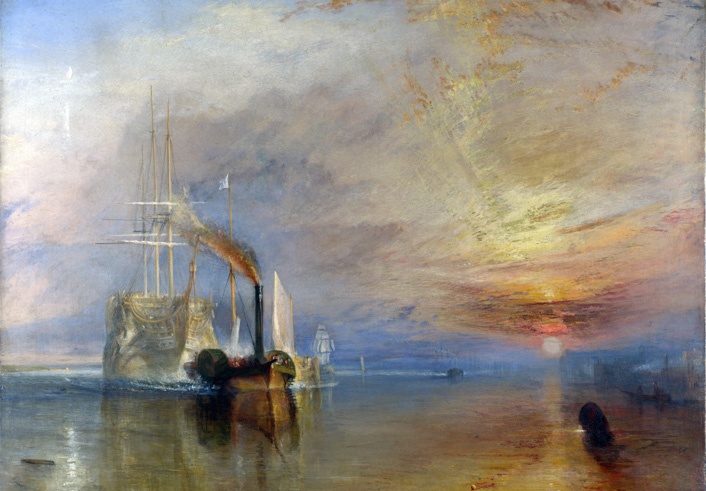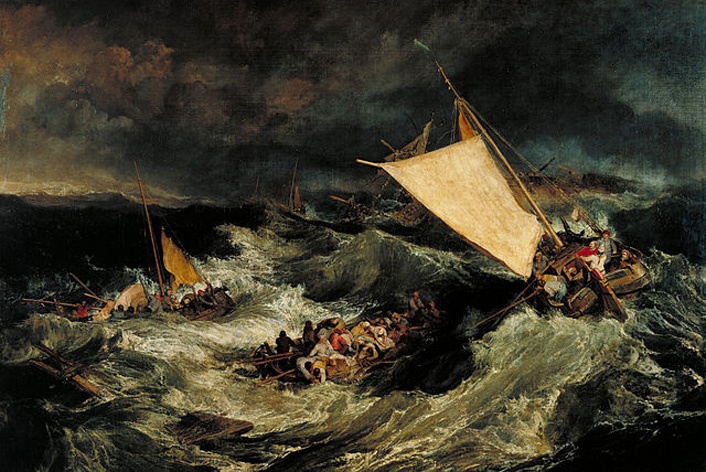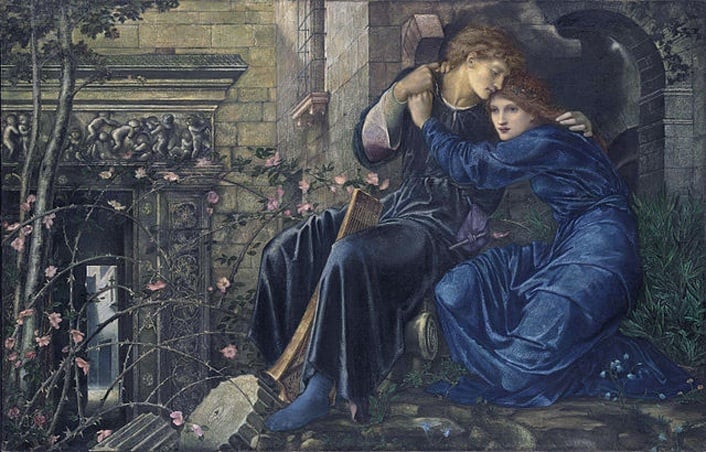Painted in 1839, this painting's full title is The Fighting Temeraire Tugged to her Last Berth to be Broken up. J.M.W. Turner (1775–1851) was in his sixties when he painted it in London, and so it showcases his mastery – particularly of sea and sky – gathered over a distinguished career. Paint is layered on thickly to make up the sky and the sun's rays, which is in contrast to the delicate detail used for the ship's rigging.
Visual & Decorative Arts Blog
Joseph Mallord William Turner (1775–1851) is an elusive figure who hovers on the peripherals of his paintings and sketches. He was hugely prolific during his life, and apart from his exhibition oils and watercolours, has left a legacy of sketchbooks and drawings done during his extensive travelling. His work leaves us with volumes of information about his painting, his techniques and his influences, but little about his essential being.
Topics: J. M. W. Turner, romanticism
The clean, simple, pure forms of Neoclassicism arose as a counter movement to the frivolous Rococo style, particularly at a time when new discoveries from Pompeii were proving inspirational to artists. As a reaction against the Academies, however, the ideals of Romanticism – which favoured wilder, more emotional artworks – started to gain popularity. Offshoots of Romanticism began to appear throughout Europe, most notably in the work of the Nazarenes in Germany and the Pre-Raphaelite Brotherhood in England, who sought to take art back to a time before Raphael and his Classical influences had been a corrupting influence on art.
Topics: pre-raphaelites, Art Movements, romanticism, neoclassicism






